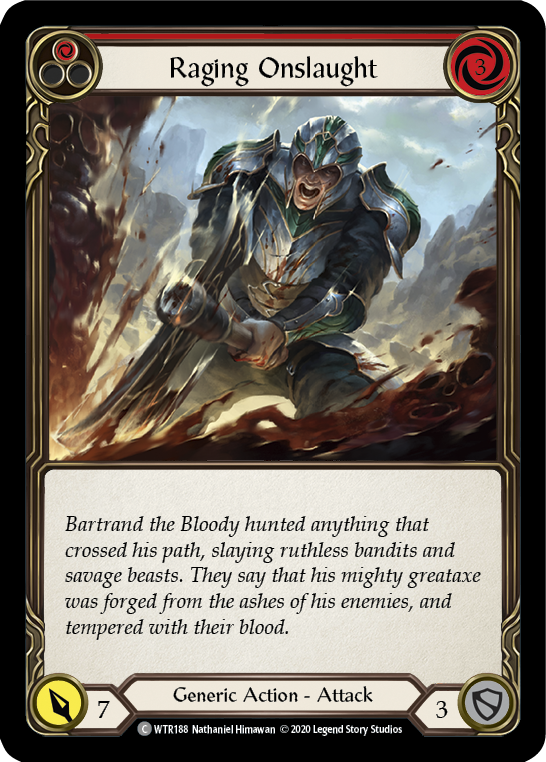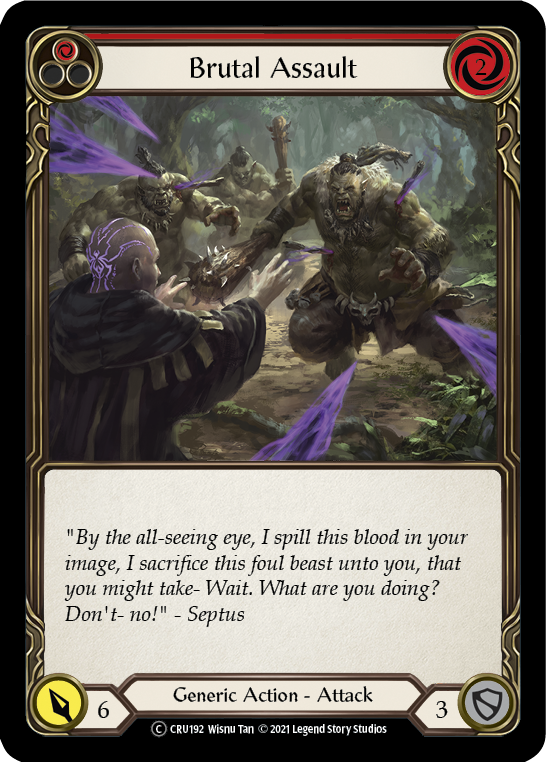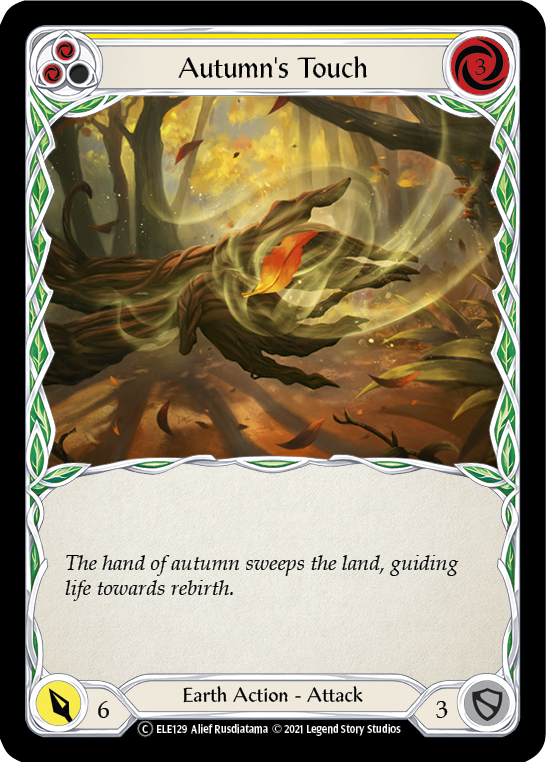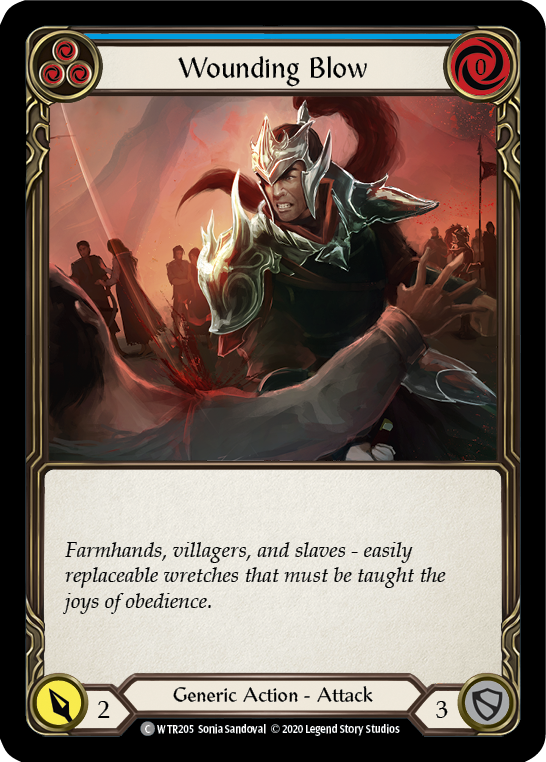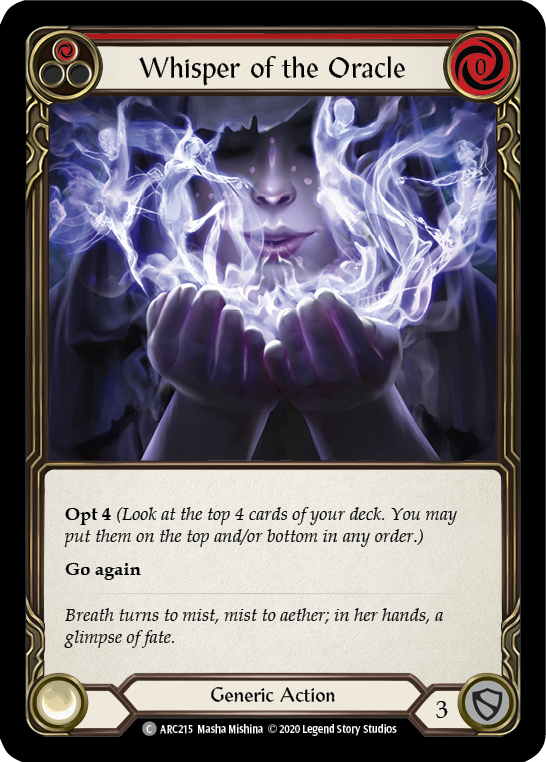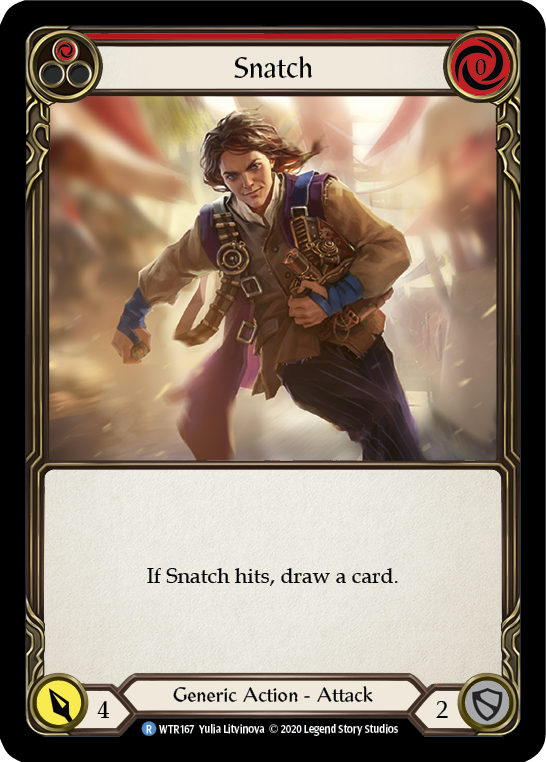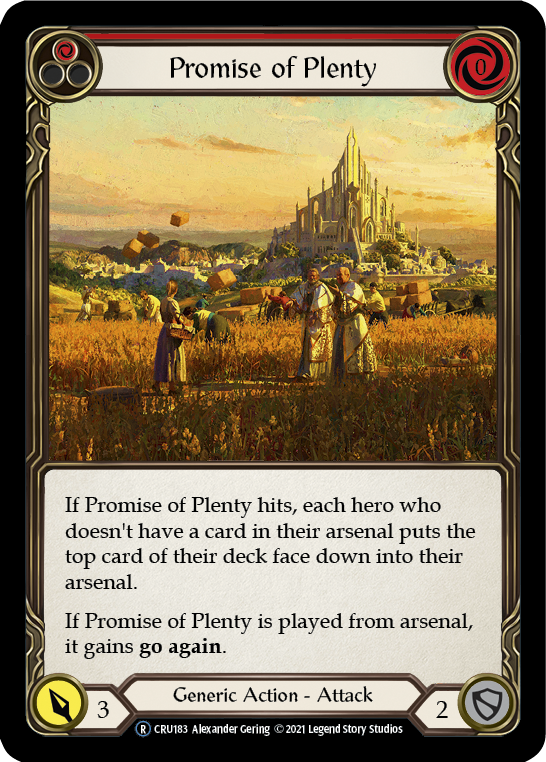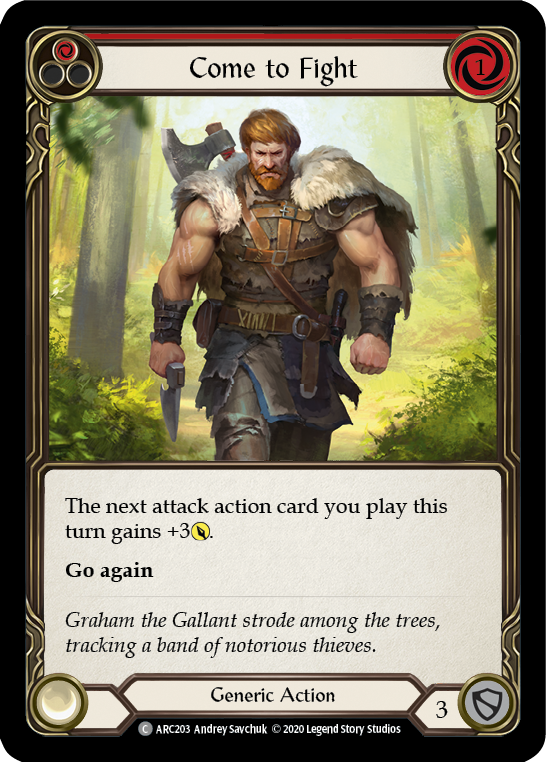It’s a common buzzword in Flesh and Blood to call cards “above curve” or “below curve” in reference to their relative abilities when played. But what does this all actually mean? In manner of speaking, it can be easy to substitute “good” or “bad” into these phrases as simpler synonyms, but underneath the fancy diction is a wonderful system based on solid mathematical values and game balancing. Today we’ll be able to investigate the system behind the resource curve in Flesh and Blood and speak about how understanding the basics behind it can help you gain a better insight into deckbuilding in our game.
In a vacuum, the resource curve in Flesh and Blood operates around the number eight. This means the sum of all values on a standard card with no text should add up to eight. Let’s look at Raging Onslaught (Red) as an example.
Raging Onslaught (Red) provides value in three places – its pitch value (one), its attack value (seven) and defense value (three). The values of these add up to 11 (7+3+1). It also demands resources in its cost (three), which we must subtract from the sum of the value it gives. This leads us to the final value of eight (11-3). This base value of eight is found across all cards in Flesh and Blood without any additional game text upon them. Look to cards like Wounding Blow (Blue), Autumn’s Touch (Yellow), Brutal Assault (Red), etc. All the following cards will add up to eight in their total value following the formula:
Pitch Value + Attack Value + Defense Value – Cost to Play = 8
This also holds true for non-attacks. Look at Whisper of the Oracle (Red). The card adds up with its pitch value of one, a block value of three and an opt value of four. All subtracted by its cost of zero leads you to a sum of eight.
Compared to attack actions, non-attacks must substitute their alternate effect values into the “attack value” slot in the equation. In the case of Whisper of the Oracle, the alternate value ends up being an opt X value.
Now a quick glance to the card gallery on fabtcg.com may have you questioning this rule of eight. You may ask “well Abbas, cards like Snatch, Promise of Plenty, Come to Fight and more all fall below this resource curve… does that mean the system is just a bunch of baloney?” Although your first tendency was the same as mine, a closer inspection reveals many answers to how the system supports itself.
Looking at Snatch first, we can see that the raw numbers simply add up to seven (2+4+1-0) rather than eight. This would make it worse for value them Wounding Blow. However, Snatch has the distinction of having an on-hit effect on drawing a card, giving the card more value when played. Although there doesn’t seem be a direct numerical value attached to each of these effects depending on what they do, generally each separate blurb of text counts as a value of one towards the final value of the card. If we count the “draw a card” text as a value of one, then suddenly Snatch as well is adding up to eight.
In the same manner, Promise of Plenty (Red) has two blurbs of text – one for it’s on-hit effect and one regarding its “played from Arsenal” effect. This leads to having a total sum of two (block value) + three (attack value) + one (pitch value) + two (text value) – zero (cost to play) = eight (total value). This simple premise stretches out throughout the game.
However, there are some more true exceptions. It seems that non-attack actions buffing your next attack are always kept at slightly below curve, this design choice, reflected in Come to Fight, Nimblism, etc, showcases them at a sum closer to around a value of six. The universality of this choice means it is a direct design choice rather than a mistake, possibly lending towards the fact that non-attacks could easily become overpowered if held to the same standard, especially in classes with other ways to leverage them such as Runeblade.
Of course, this also means there are cards that are quite above resource curve in value. To risk being a little cliché, Command and Conquer slots nicely into this slot. The card’s base stats lend it to sum up to eight as usual (3+6+1-2), however this does not include the two incredible blurbs of text on C&C. Counting each piece of text as one, Command and Conquer comes up to an incredible above curve value of 10!
There are also the specialization cards, which seem to be slightly over curve at a value of nine. Take Red in the Ledger and Endless Winter as your examples. Both have base stats adding to eight, and then wonderful text boxes boosting that value up by one once more to nine. As a result, these specialization so often feel great to play as they present great “above curve” power in the game.
Flesh and Blood’s resource curve is an extremely integral part of their balancing mechanics, and as the game develops, it’s interesting to see the game designers further tinker with the effects surrounding it and balance out this game in unique ways. When making your next deck, or examining the next new set, keep an extra eye out for cards above and below curve, it may just help you find that little bit of hidden value in cards otherwise passed over by the rest of us.



